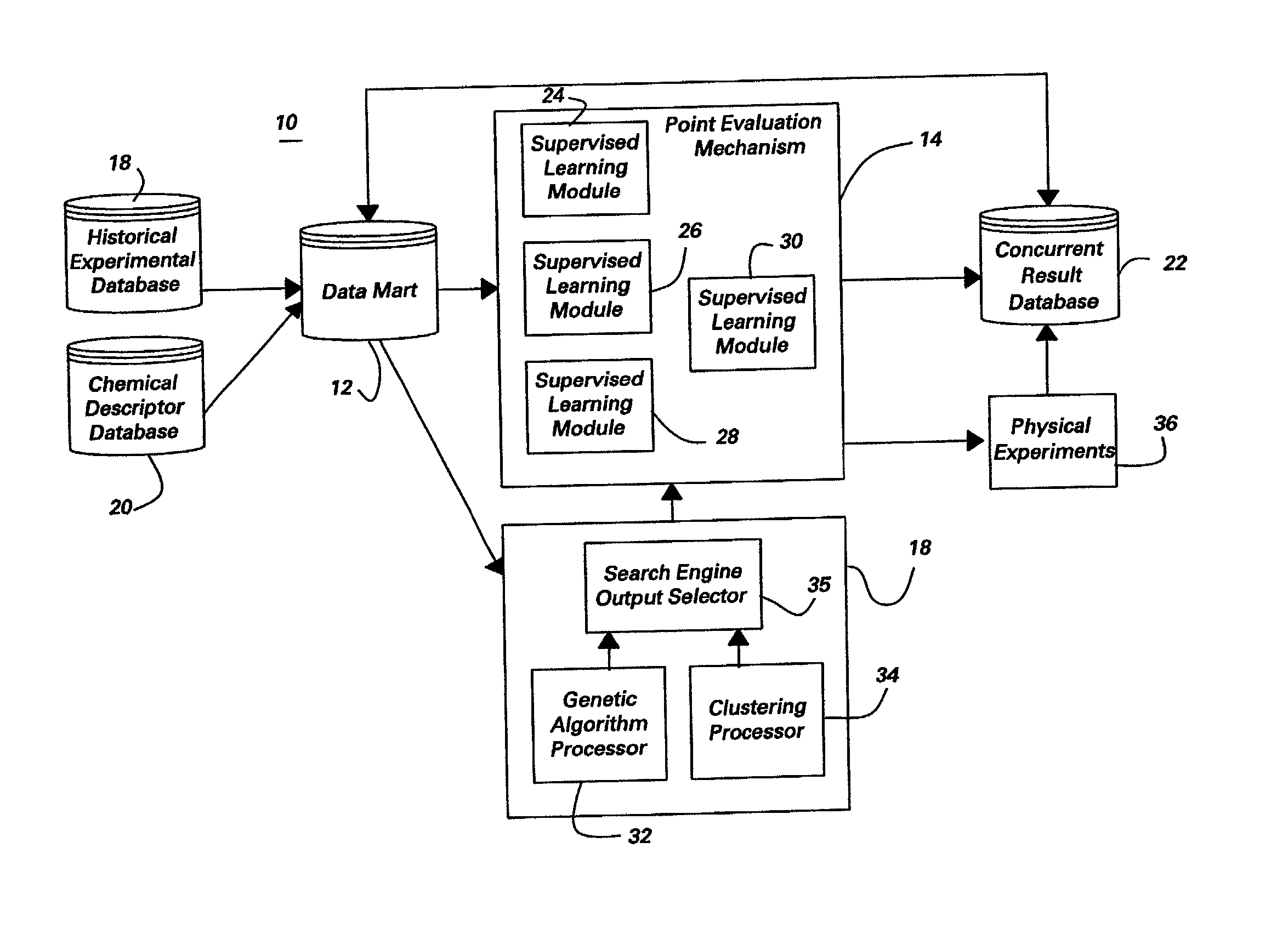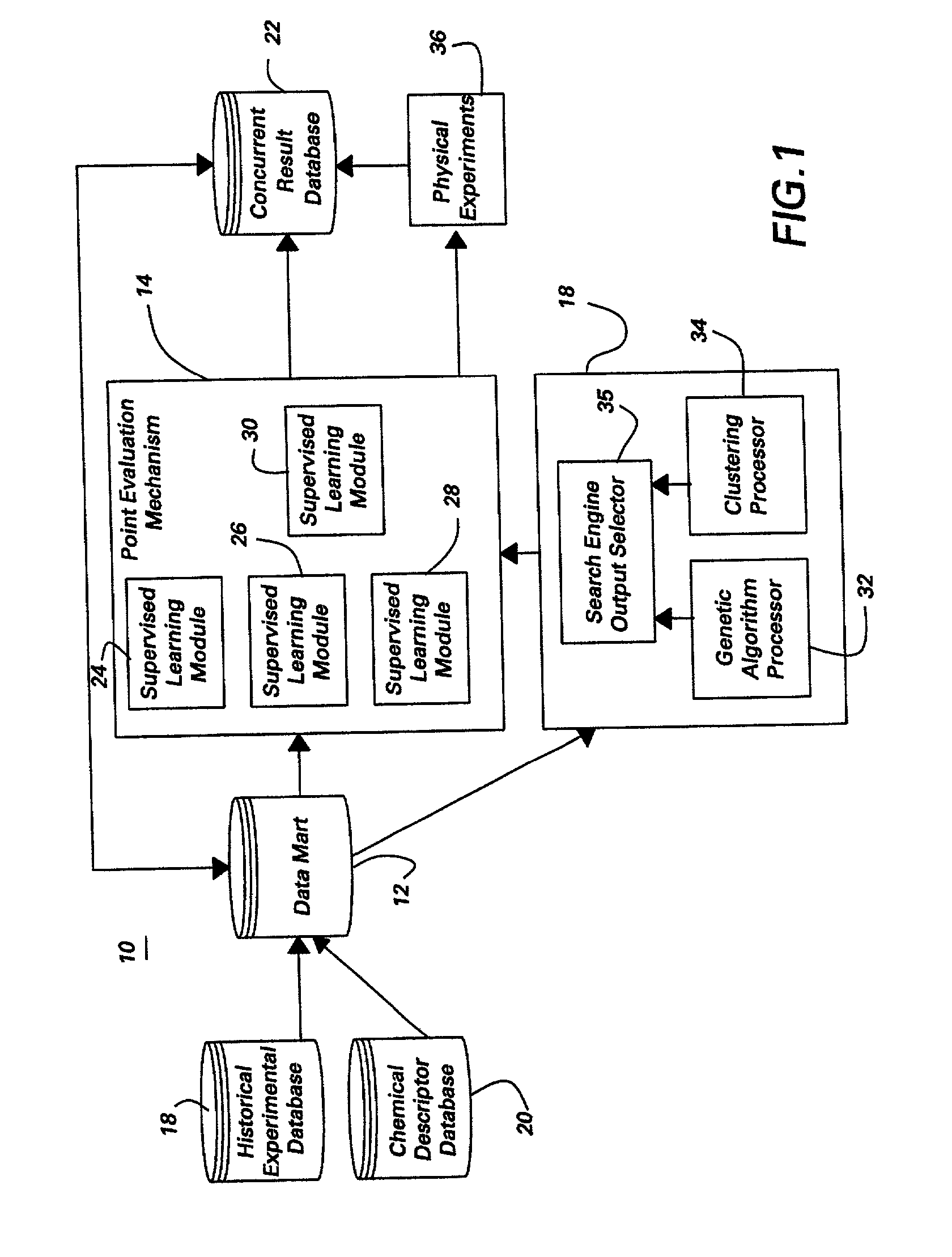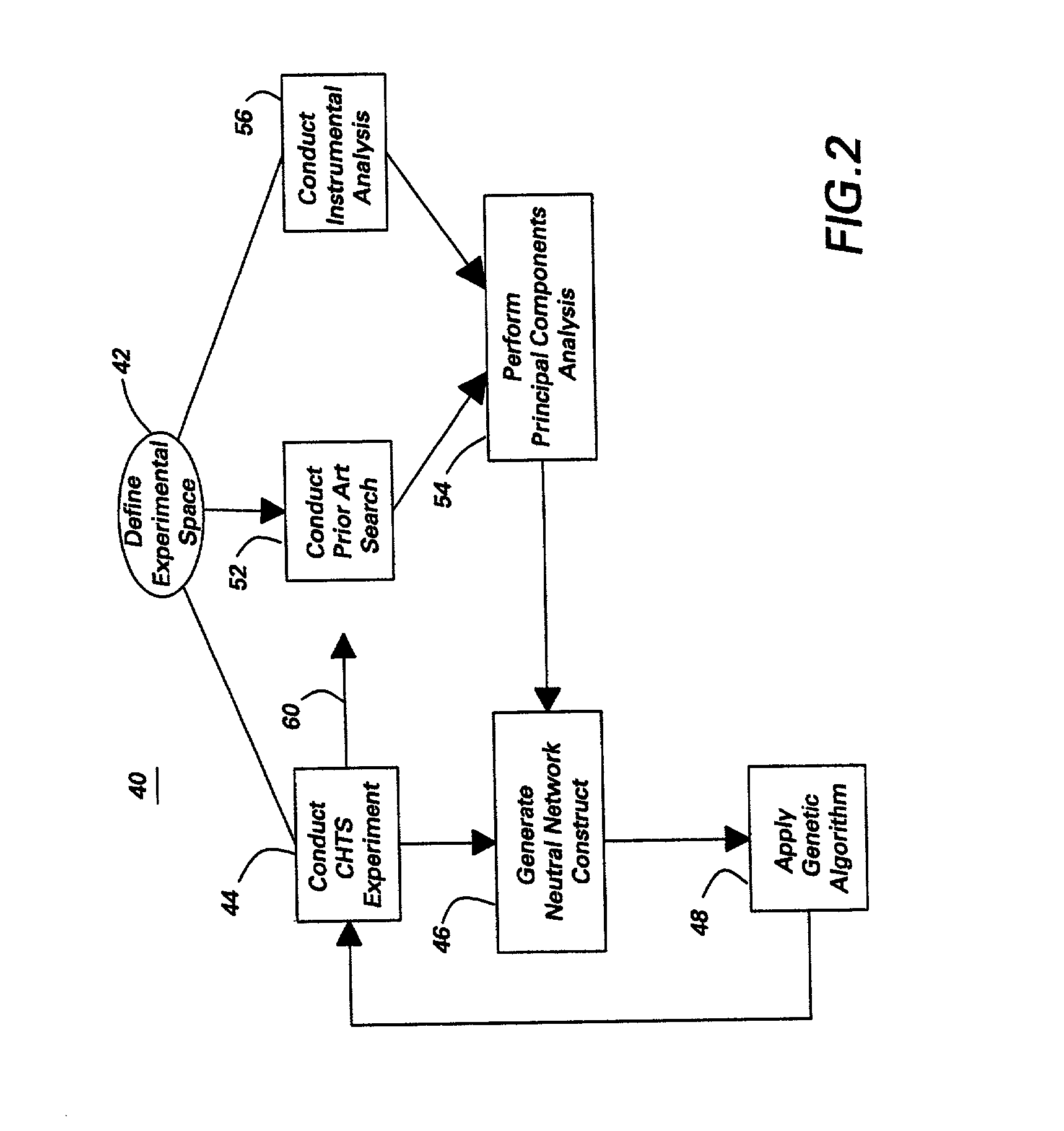Neural network method and system
a neural network and input space technology, applied in the field of combinatorial high throughput screening (chts) method and system, can solve the problems of difficult application of chts methodology to certain materials experiments, unpredictable catalytic chemical reactions, etc., and achieve the effect of reducing the number of adjustable parameters, reducing the dimensionality of the neural network input space, and reducing the number of experiment data required
- Summary
- Abstract
- Description
- Claims
- Application Information
AI Technical Summary
Benefits of technology
Problems solved by technology
Method used
Image
Examples
Embodiment Construction
[0053] An initial chemical space for a CHTS experiment is defined as the set of factors for catalyzed diphenylcarbonate reaction system shown in TABLE 1.
1TABLE 1 Role Chemical Species Amount Catalyst Pd(aac)2 25 ppm Cocatalyst Metal One or two of 19 metal 300-500 ppm in 5 steps acetylacetonates of similar compounds Halide Compound Hexaethylguanadinium Bromide 1000-5000 ppm in 5 steps Solvent / Precursor Phenol Balance
[0054] Seventy runs of 8550 possible runs in the system are selected at random. Each metal acetylacetonate candidate and cosolvent is made up as a stock solution in phenol. Ten ml of each stock solution are produced by manual weighing and mixing. A Hamilton MicroLab 4000 laboratory robot is used to combine aliquots of the stock solutions into individual 2-ml vials. The mixture in each vial is stirred using a miniature magnetic stirrer. The small quantity in each vial forms a thin film. The vials are loaded into a high pressure autoclave and reacted at 1000 psi, 10% CO in ...
PUM
 Login to View More
Login to View More Abstract
Description
Claims
Application Information
 Login to View More
Login to View More - R&D
- Intellectual Property
- Life Sciences
- Materials
- Tech Scout
- Unparalleled Data Quality
- Higher Quality Content
- 60% Fewer Hallucinations
Browse by: Latest US Patents, China's latest patents, Technical Efficacy Thesaurus, Application Domain, Technology Topic, Popular Technical Reports.
© 2025 PatSnap. All rights reserved.Legal|Privacy policy|Modern Slavery Act Transparency Statement|Sitemap|About US| Contact US: help@patsnap.com



